American Wedding Traditions
American weddingUED-ding traditions are ceremonial customs and practices that blend historical religious rituals, diverse ethnic influences, and contemporary social values to create unique celebrations across the United States. These traditions encompass everything from pre-wedding events like engagement parties and bridal showers to ceremony customs like exchanging rings and reception rituals like cutting the wedding cake. Modern American weddings typically cost between $20,000-$35,000 and involve an average of 135 guests, making them significant cultural and economic events.
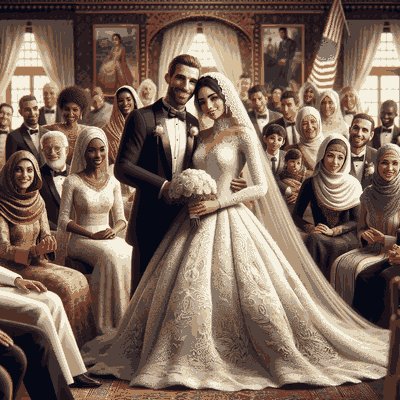
What Makes American Wedding Traditions Unique?
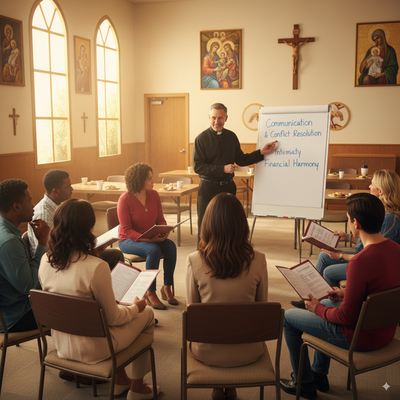
American weddingUED-ding traditions represent a distinctive fusion of customs from multiple cultural sources, adapted and evolved over generations. Unlike weddings in many other countries that follow strict cultural or religious protocols, American weddings are characterized by their flexibility and personalization. The United States wedding industry generates over $70 billion annually, supporting everything from bridal fashion to event planning services.
Key Characteristics of American Weddings:
- Cultural Fusion: Blending traditions from European, African, Asian, and Latin American cultures
- Regional Variations: Distinct customs varying by geographic locationlo-KEI-scion and local heritage
- Personal Choice: Couples select which traditions to include based on preference
- Evolution: Continuous adaptation reflecting changing social values and technology
- Inclusivity: Increasing acceptance of diverse couple configurations and cultural backgrounds
Pre-Wedding Traditions in American Culture
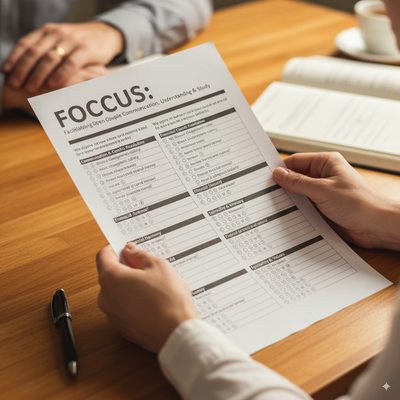
What is an American Engagement Tradition?
An engagement in American culture is a formal agreement to marry that typically involves a proposal with a diamond ring, public announcement, and celebration period lasting 12-18 months on average. The tradition of diamond engagement rings became standard after De Beers’ 1947 marketing campaign “A Diamond is Forever,” with Americans now spending an average of $5,900 on engagement rings.
The Proposal Process
Modern American proposals have evolved from simple questions to elaborate productions. Today, 40% of proposals involve some form of public display or unique locationlo-KEI-scion, while 85% still follow the tradition of presenting an engagement ring. The “two months’ salary” guideline for ring purchasing, once standard, has given way to more personalized budgeting approaches.
Engagement Announcements and Parties
An engagement party is a celebratory gathering held 1-3 months after a proposal to formally announce the upcoming marriage to family and friends. These events range from intimate dinners to large cocktailCOC-teil parties, with regional variations:
- Northeast: Formal cocktail parties in private clubs or restaurants
- South: Garden parties or country club gatherings with receiving lines
- West Coast: Casual beach gatherings or wine tastings
- Midwest: Family-style dinners or backyard barbecues
How Do Bridal Showers Work in America?
A bridal shower is a gift-giving party held 2-3 months before the weddingUED-ding where female friends and relatives “shower” the bride with presents for her new household. This tradition originated in 16th-century Europe when a Dutch bride’s father disapproved of her chosen groom and refused to provide a dowry, prompting her friends to shower her with gifts.
Traditional Bridal Shower Elements:
- Timing: Usually held on weekend afternoons, 2-8 weeks before wedding
- Guest List: Typically 15-40 female guests who are also invited to wedding
- Activities: Opening gifts publicly, playing 2-3 themed games, sharing advice
- Food: Light lunch or tea service with cake decorated in wedding theme
- Gifts: Household items from wedding registry, averaging $50-75 per guest
Modern Shower Variations:
- Couples’ Showers: Including both partners and mixed-gender guests (30% of showers)
- Themed Showers: Kitchen, lingerie, travel, or hobby-specific gift themes
- Virtual Showers: Online gatherings for geographically dispersed guests
- Experience Showers: Group activities like cooking classes or spa days
What Happens at Bachelor and Bachelorette Parties?
Bachelor and bachelorettebatch-uh-lor-ET parties are pre-wedding celebrations where the bride and groom separately celebrate with their closest friends, typically involving travel, group activities, and commemorating the transition to married life. Originally single-night events, 67% now span entire weekends, with average spending of $1,500 per attendee.
Popular Bachelor Party Destinations and Activities:
- Las Vegas, Nevadanuh-VAD-uh: Gambling, shows, nightlife (18% of parties)
- Nashville, Tennessee: Live music, brewery tours, outdoor activities
- Miami, Florida: Beach clubs, fishing charters, nightlife
- Austin, Texas: BBQ tours, live music, outdoor adventures
- Local Activities: Sporting events, golf outings, whiskey tastings
Popular Bachelorette Party Trends:
- Scottsdale, Arizona: Spa resorts, pool parties, desert activities
- Charleston, South Carolina: Historic tours, beach time, Southern cuisine
- Napa Valley, California: Wine tastings, hot air balloons, luxury accommodations
- New Orleans, Louisiana: Jazz clubs, culinary tours, festive atmosphere
- Wellness Retreats: Yoga, meditation, healthy cuisine experiences
Wedding Attire Traditions and Their Meanings
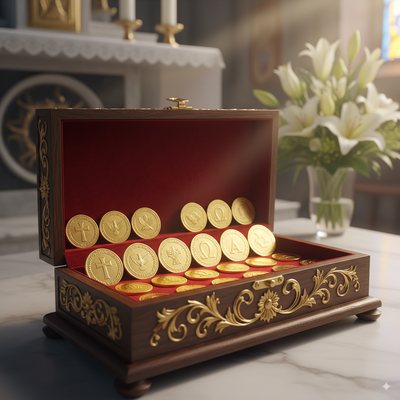
Why Do American Brides Wear White Wedding Dresses?
The white weddingUED-ding dress is a bridal gown traditionally made in white or ivory fabric, symbolizing purity and new beginnings, which became standard in American weddings after Queen Victoria wore white to marry Prince Albert in 1840. Before this royal influence, American brides wore their best dress regardless of color. Today, 83% of American brides still choose white or off-white gowns, though this tradition is evolving.
Evolution of American Bridal Fashion:
- 1920s-1940s: Dropped waists, Art Deco details, shorter hemlines
- 1950s-1960s: Full skirts, fitted bodices, inspired by Grace Kelly
- 1970s-1980s: Prairie influences, Princess Diana-inspired poufs
- 1990s-2000s: Minimalist sheaths, strapless gowns
- 2010s-Present: Diverse silhouettes, sustainable options, cultural fusion
Modern Bridal Dress Trends:
- Color Variations: Blush (12%), champagne (8%), bold colors (3%)
- Sustainable Choices: VintageVIN-tig15%, rented (10%), pre-owned (8%)
- Price Ranges: Average $1,800, ranging from $200 to $10,000+
- Shopping Timeline: Typically purchased 8-12 months before wedding
What Does “Something Old, New, Borrowed, Blue” Mean?
“Something old, something new, something borrowed, something blue” is a traditional rhyme dictating four items a bride should wear for good luck, with each element carrying specific symbolic meaning for the marriage. This Victorian-era tradition remains popular, with 76% of American brides incorporating at least three of the four elements.
Symbolic Meanings and Modern Interpretations:
- Something Old: Continuity with the past - Common choices: Family jewelry (45%), vintage handkerchief (20%), heirloom veil (15%)
- Something New: Optimism for the future - Common choices: Wedding dress (65%), shoes (20%), jewelry (15%)
- Something Borrowed: Transferred good fortune - Common choices: Jewelry from married friend (40%), veil (25%), clutch purse (15%)
- Something Blue: Fidelity and love - Common choices: Garter (35%), shoe soles (25%), dress detail (20%)
How Have Groom’s Wedding Attire Traditions Evolved?
The tuxedo is formal evening wear consisting of a dinner jacket with satin lapels, matching trousers with satin stripe, and formal accessories, which became standard American groom’s attire in the early 20th century. The garment originated at Tuxedo Park, New York, in 1886, when Griswold Lorillard wore a tailless dinner jacket to the autumn ball.
Contemporary Groom’s Attire Options:
- Classic Black Tuxedo: Still chosen by 40% of grooms
- Navy or Gray Suits: Preferred by 35% for versatility
- Casual Options: Khakis and blazers for beach weddings (15%)
- Cultural Attire: Traditional dress from heritage (10%)
- Seasonal Variations: Lighter colors for summer, velvetVEL-vit for winter
Wedding Ceremony Traditions and Customs
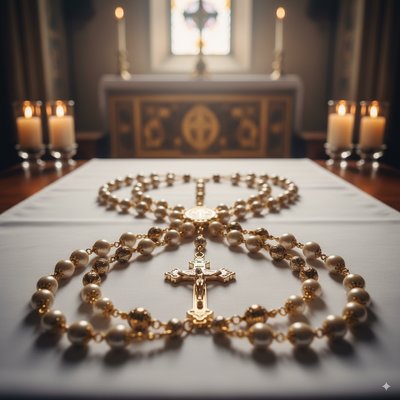
What is the Traditional American Wedding Processional Order?
The weddingUED-ding processionalproh-SESH-uh-nul is the formal entrance of the wedding party at the ceremony’s beginning, following a specific order that traditionally symbolizes the bride’s transition from her father’s family to her husband’s family. This ritual has evolved significantly from its patriarchal origins to reflect modern family structures and values.
Traditional Processional Order:
- Grandparents: Seated by ushers (both sides)
- Parents of Groom: Mother escorted, father follows
- Mother of Bride: Escorted to seat, signals ceremony start
- Groomsmengrumz-men: Enter from side or walk down aisle
- BridesmaidsBRAIDZ-meidz: Walk individually or in pairs
- Maid/Matron of Honor: Precedes bride
- Ring Bearer and Flower Girl: Ages 3-8 typically
- Bride and Escort: Traditionally father, increasingly both parents
Modern Processional Adaptations:
- Both Parents Escorting: Chosen by 35% of brides
- Walking Alone: Selected by 15% of brides
- Same-Sex Couples: Creative entrances from opposite sides (meeting in middle)
- Blended Families: Including children from previous relationships
- Non-Traditional Music: Personal songs replacing wedding marches
Why Don’t Couples See Each Other Before the Ceremony?
The tradition of not seeing each other before the wedding is a superstition dating from arranged marriages, when preventing the groom from seeing the bride ensured he wouldn’t change his mind about marriages arranged for economic reasons. Today, this tradition persists for 55% of couples who value the emotional impact of seeing each other at the altar.
First Look: A Modern Alternative
A “first look” is a private moment before the ceremony where the couple sees each other for the first time on their wedding day, typically captured by photographers. This modern tradition, adopted by 45% of couples, offers benefits:
- Private emotional moment without audience pressure
- Extended photography time before ceremony
- Reduced pre-ceremony anxiety for both partners
- More reception time with guests after ceremony
What Are Unity Ceremonies in American Weddings?
Unity ceremonies are symbolic rituals performed during the wedding ceremony that visually represent two individuals becoming one married unit, with the unity candle being the most traditional American version. These ceremonies provide a meaningful visual element and often result in a keepsake for the couple’s home.
Popular Unity Ceremony Types:
- Unity Candle (35% of weddings) - Two taper candles light one pillar candle - Originated in American churches in the 1970s - Often includes family participation
- Sand Ceremony (25% of weddings) - Different colored sands poured into single vessel - Popular for beach and outdoor weddings - Creates permanent keepsake
- Handfasting (15% of weddings) - Celtic tradition of binding hands with cord - Source of phrase “tying the knot” - Increasingly popular in secular ceremonies
- Tree Planting (10% of weddings) - Combining soil from each person’s childhood home - Environmentally meaningful option - Living symbol of growing relationship
- Wine Box Ceremony (8% of weddings) - SealingSEE-ling letters and wine to open on anniversary - Creates future celebration tradition - Personalizable to couple’s preferences
Wedding Reception Traditions
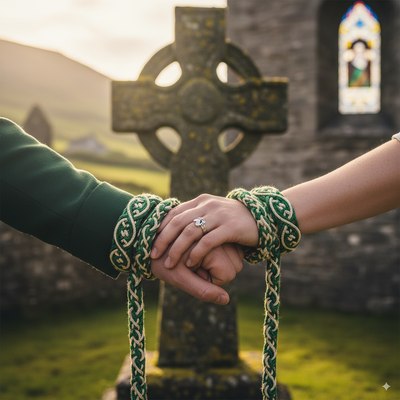
What Happens During the Wedding Reception Grand Entrance?
The grand entrance is the formal introduction of the newly married couple and their weddingUED-ding party as they enter the reception venue, typically accompanied by music and applause from guests. This tradition evolved from formal ball presentations and serves to transition from ceremony solemnity to reception celebration.
Traditional Grand Entrance Format:
- Wedding Party Introduction: Pairs announced with names and roles
- Music Selection: Upbeat songs chosen by couple
- Creative Elements: Props, choreography, or themes
- Couple’s Introduction: “For the first time as husband and wife” (traditional)
- Immediate Transition: Usually to first dance or dinner service
Regional and Cultural Variations:
- New Orleans: Second line parade with brass band and umbrellas
- Jewish Weddings: Immediate transition to hora circle dance
- Hispanic Weddings: Mariachi band accompaniment
- Modern Trends: Choreographed dances, costume changes, surprise elements
How Did the First Dance Tradition Begin?
The first dance is the newlyweds’ initial dance as a married couple, traditionally a waltz that formally opened the dancing portion of the reception and demonstrated the couple’s social graces. This tradition has roots in European formal balls where hosts would open the dancing. Today, 90% of American couples include a first dance, though styles vary dramatically.
First Dance Evolution:
- 1900s-1940s: Formal waltz or foxtrot to standards
- 1950s-1970s: Slow dancing to romantic ballads
- 1980s-1990s: Power ballads and contemporary hits
- 2000s-2010s: Choreographed surprises going viral
- 2020s: Mix of traditional and TikTok-inspired routines
Popular First Dance Songs by Era:
- Classic: “At Last” by Etta James, “The Way You Look Tonight” by Frank Sinatra
- Modern: “Perfect” by Ed Sheeran, “All of Me” by John Legend
- Country: “Die a Happy Man” by Thomas Rhett, “Speechless” by Dan + Shay
- Alternative: “First Day of My Life” by Bright Eyes, “Ho Hey” by The Lumineers
Why Do American Couples Cut the Wedding Cake Together?
Wedding cake cutting is a ceremonial tradition where the couple makes the first cut of their wedding cake together, symbolizing their first joint task as spouses and their commitment to provide for each other. This tradition evolved from ancient Roman weddings where bread was broken over the bride’s head for fertility and good fortune.
Traditional Wedding Cake Elements:
- Multiple Tiers: Average 3-4 tiers, symbolizing prosperity
- White Frosting: Matching the bride’s dress, symbolizing purity
- Cake Topper: Representing the couple (used by 75% of couples)
- Saving Top Tier: Frozen for first anniversary (practiced by 60%)
- Feeding Each Other: Symbolizing commitment to nourish relationship
Modern Cake Alternatives:
- Cupcake Towers: Easier serving, variety of flavors (15% of weddings)
- Dessert Bars: Multiple options including pies, cookies, donuts (20%)
- Groom’s Cake: Southern tradition expanding nationwide (30%)
- Cultural Desserts: Incorporating heritage through traditional sweets
- Dietary Accommodations: Gluten-free, vegan, sugar-free options
What is the History of the Bouquet and Garter Toss?
The bouquetboo-KAY toss is a reception tradition where the bride throws her flower bouquet backward to assembled single women, with catching it supposedly predicting who will marry next. This tradition evolved from medieval times when wedding guests would tear pieces of the bride’s dress for good luck, with the bouquet offering a safer alternative.
Traditional Toss Statistics and Modern Adaptations:
- Participation Rate: Declining from 85% (2000) to 45% (2025)
- Timing: Usually after dinner, before dancing opens fully
- Alternatives: Anniversary dance honoring longest-married couple
- Inclusive Options: All guests regardless of marital status
- Keepsake Solutions: Toss bouquet separate from bridal bouquet
The garter toss is the parallel tradition where the groom removes a garter from the bride’s leg and tosses it to single men. This tradition has more controversial origins in the medieval “bedding ceremony” and has declined more sharply than the bouquet toss, with only 35% of modern couples including it.
Las Vegas Wedding Traditions
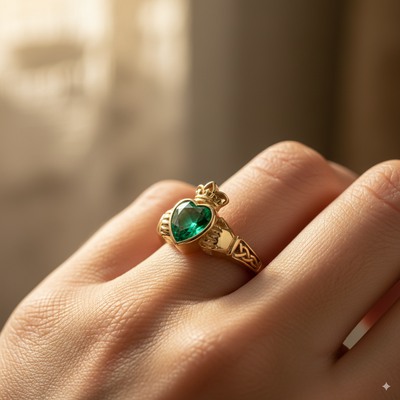
What Makes Las Vegas Weddings Unique?
Las Vegas weddings are marriage ceremonies performed in Las Vegas, Nevadanuh-VAD-uh, characterized by minimal legal requirements, 24-hour availability, themed chapels, and options ranging from drive-through ceremonies to elaborate casino celebrations. Las Vegas became America’s weddingUED-ding capital after Nevada eliminated blood test requirements and waiting periods in 1931, allowing same-day marriages.
Las Vegas Wedding Statistics:
- Annual Licenses Issued: 80,000-100,000
- Average Chapel Ceremony Cost: $75-$500
- Celebrity Weddings: Over 300 documented since 1950s
- International Couples: 15% from outside United States
- Renewal Ceremonies: 20% are vow renewals
How Do Elvis Weddings Work?
An Elvis wedding is a Las Vegas ceremony tradition where an Elvis Presley impersonator serves as officiantuh-FISH-unt or performer, incorporating Elvis songs, costumes, and mannerisms into the marriage ceremony. This tradition began in the 1970s following Elvis’s own 1967 Las Vegas wedding and continues as one of the city’s most requested ceremony types.
Standard Elvis Wedding Package Elements:
- Elvis ImpersonatorEL-vis im-PER-suh-nay-ter: Young Elvis (1950s) or Jumpsuit Elvis (1970s)
- Musical Numbers: 2-4 songs during ceremony
- Vow Adaptations: Elvis-themed promises and references
- Photo Opportunities: Poses with Elvis and props
- Transportation: Optional pink Cadillac service
- Certificate: Commemorative Elvis-signed document
Elvis Wedding Popularity:
Regional American Wedding Traditions
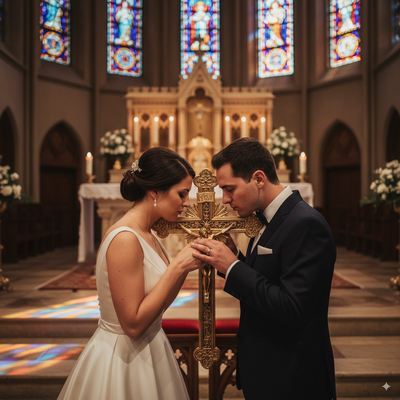
What Are Unique Southern Wedding Traditions?
Southern weddingUED-ding traditions are customs specific to the American South that blend genteel hospitality, religious influences, and regional cultural practices into distinctive celebration elements. These traditions reflect the South’s emphasis on family, formality, and celebration, often incorporating elements dating back to the antebellum period.
Distinctive Southern Wedding Customs:
Burying the Bourbon is a Southern tradition where couples bury a full bottle of bourbon upside down at their venue exactly one month before the wedding to ensure good weather. The bottle is dug up after the ceremony and shared with the wedding party. This tradition has 85% reported success rate for good weather.
The Groom’s Cake is a secondary cake reflecting the groom’s personality, hobbies, or interests, traditionally chocolate and often shaped uniquely. Originated in Victorian England but became distinctly Southern, appearing at 60% of Southern weddings compared to 20% nationally.
Cake Pulls involve placing charms attached to ribbons under the wedding cake’s bottom layer before frosting. During the reception, bridesmaidsBRAIDZ-meidz pull ribbons to reveal charms predicting their futures:
- Anchor: Adventure or travel
- Ring: Next to marry
- Heart: True love coming
- Fleur de Lis: New beginnings
- Key: New home
How Do Northeastern Weddings Differ?
Northeastern wedding traditions reflect the region’s colonial history, urban sophistication, and diverse immigrant influences, creating formal yet culturally rich celebrations. These traditions often emphasize extended celebrations, formal attire, and family involvement.
Distinctive Northeast Elements:
Cookie Tables (Pennsylvania, Ohio, Western New York) feature elaborate displays of homemade cookies brought by family members, often including 5-10 varieties per family and totaling thousands of cookies. This tradition originated in Pittsburgh’s Eastern European communities.
Italian Sunday Gravy served at rehearsal dinners or day-after brunches in Italian-American communities throughout New Jersey, New York, and Connecticut, featuring multi-hour simmered tomato sauce with various meats.
Clambakes as rehearsal dinners or welcome parties in coastal New England, featuring lobster, clams, corn, and potatoes cooked in seaweed-lined pits or steamers.
What Defines Western Wedding Traditions?
Western wedding traditions embrace the region’s natural landscapes, frontier heritage, and outdoor lifestyle, creating ceremonies that prioritize dramatic settings and casual elegance. These traditions reflect the West’s cultural values of individualism, natural beauty, and informal social structures.
Distinctive Western Elements:
National Park Weddings utilize the West’s dramatic landscapes, with popular venues including:
- Yosemite: Valley views and meadow ceremonies
- Grand Canyongrand KAN-yun: Rim ceremonies at sunrise/sunset
- Zion: Red rock backdrops
- Glacier: Mountain lake settings
Ranch Weddings incorporate authentic Western elements:
- Barn Receptions: Rustic venues with modern amenities
- Horseback Arrivals: Bride or couple arriving on horseback
- BBQ Receptions: Locally sourced beef, family-style service
- Western Attire: Boots, hats, bolo ties as formal wear
Wine Country Traditions in California, Oregon, and Washington:
- Vineyard Ceremonies: Among the vines during golden hour
- Wine Blending: Unity ceremony creating custom blend
- Harvest Timing: September-October peak season
- Food Pairing: Multi-course dinners with wine pairings
Cultural Wedding Traditions in America
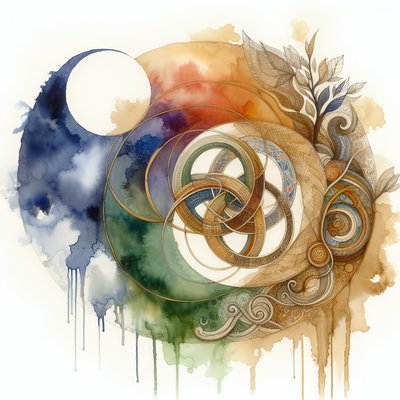
How Are Jewish Weddings Celebrated in America?
Jewish American weddings are ceremonies that blend ancient religious traditions with contemporary American customs, featuring distinctive rituals like the chuppahkhoo-PAH, ketubahkeh-too-BAH signing, and breaking of the glass. These celebrations vary significantly based on denominational affiliation (Orthodox, Conservative, Reform, or Secular) and family traditions.
Essential Jewish Wedding Elements:
The Chuppah is a weddingUED-ding canopy symbolizing the couple’s new home together, traditionally made of a tallit (prayer shawl) supported by four poles. Modern American chuppah designs include:
- Floral Chuppah: Covered in flowers matching wedding colors
- Family Heirloom: Using grandparents’ wedding tallit
- Natural Elements: Branches, greenery for outdoor weddings
- Portable Structures: For destination or beach ceremonies
The Ketubah is a Jewish marriage contract outlining mutual responsibilities, traditionally written in Aramaic but often translated to English. Contemporary American ketubahs feature:
- Artistic Designs: Commissioned artwork for home display
- Egalitarian Text: Modern language reflecting equal partnership
- Signing Ceremony: Witnessed before the wedding
- Personalization: Quotes, poems, or symbols meaningful to couple
Breaking the Glass concludes the ceremony with the groom (or both partners) stepping on a glass wrapped in cloth, followed by guests shouting “Mazel TovMAH-zel tohv!” This symbolizes:
- Historical Memory: Destruction of the Temple in Jerusalem
- Life’s Fragility: Reminder to cherish each moment
- Irrevocability: Marriage bond that cannot be undone
- Celebration Signal: Transition from ceremony to party
What Mexican Traditions Appear in American Weddings?
Mexican American wedding traditions are customs brought by Mexican immigrants and Mexican American families that add symbolic rituals, vibrant celebrations, and family-centered elements to weddings. These traditions are particularly prevalent in California, Texas, Arizona, and New Mexico, but have influenced wedding customs nationally.
Core Mexican American Wedding Elements:
Las Arraslahs AH-rahsWedding Coinsg Coins) are thirteen gold coins presented by the groom to the bride during the ceremony. The coins represent:
- Jesus and 12 Apostles: Religious significance
- Groom’s Commitment: Promise to provide for family
- Shared Prosperity: Mutual financial responsibility
- Family Heirloom: Often passed through generations
El Lazoel LAH-soThe Lasso is a decorative rope, rosary, or flower garland placed around the couple in a figure-eight during the ceremony. This tradition:
- Symbolizes Unity: Infinite bond between spouses
- Involves Sponsors: Padrinospah-DREE-nohs who purchase and place the lazo
- Becomes Keepsake: Displayed in couple’s home
- Duration: Worn during communion or blessing portion
La Vibora de La Marlah VEE-boh-rah deh lah mahr is a reception game where guests form a snake-like chain and the couple must pass under raised arms. This energetic tradition:
- Tests Couple: Agility and cooperation required
- Includes Everyone: All ages participate
- Creates Energy: Transitions to dance portion
- Varies Regionally: Different songs and rules by area
Modern Evolution of American Wedding Traditions
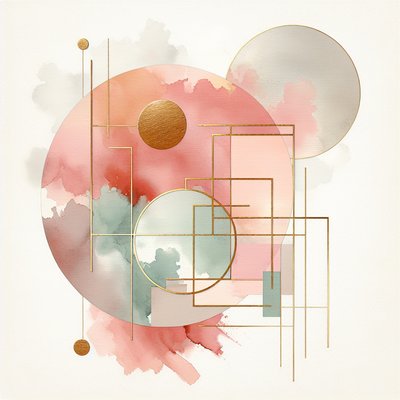
How Has Technology Changed Wedding Traditions?
Digital technology has transformed American weddings through online planning tools, social media integration, livestreaming capabilities, and new documentation methods that reshape how couples plan, execute, and share their celebrations. Technology adoption in weddings accelerated 300% during 2020-2021 and continues to redefine traditions.
Major Technological Impacts:
WeddingUED-ding Websites serve as digital hubs providing:
- Information Central: 95% of couples create wedding websites
- RSVP Management: Digital responses replace mailed cards
- Registry Links: Direct access to gift registries
- Photo Sharing: Guest uploads creating crowd-sourced albums
- COVID Updates: Real-time ceremony adjustments
Social Media Integration creates new traditions:
- Hashtag Creation: 87% of couples create unique wedding hashtags
- Live Streaming: 40% offer virtual attendance options
- InstagramIN-sta-gram Moments: Dedicated photo opportunities designed for sharing
- TikToktic-toc Trends: Viral dances and surprise moments planned
- Digital Guestbooks: Video messages replace written notes
Photography Evolution through technology:
- Drone Coverage: Aerial ceremony and venue shots
- Same-Day Edits: Reception slideshows of ceremony photos
- 360-Degree Cameras: Immersive ceremony recordings
- AI Enhancement: Automated editing and guest identification
- Cloud Delivery: Immediate access to professional photos
What Sustainable Wedding Traditions Are Emerging?
Sustainable wedding practices are environmentally conscious approaches to celebrating marriages that minimize waste, support local economies, and reduce carbon footprints while maintaining meaningful traditions. The green wedding movement has grown 78% since 2019, influencing every aspect of celebrations.
Sustainable Practice Categories:
Venue and Locationlo-KEI-scion Choices:
- Local Venues: Reducing guest travel emissions
- Outdoor Spaces: Minimizing decoration needs
- LEED-Certified Buildings: Environmentally designed spaces
- Farm Venues: Supporting agricultural preservation
- Public Parks: Low-impact natural settings
Attire and Decoration Sustainability:
- VintageVIN-tig Dresses: 25% choose pre-owned gowns
- Rental Options: Tuxedos, dresses, and accessories
- Living Centerpieces: Potted plants guests can take home
- Biodegradable Confetti: Flower petals, herbs, or seeds
- LED Lighting: Energy-efficient ambiance creation
CateringKEI-te-ring and Consumption:
- Farm-to-Table: 70% prioritize local sourcing
- Plant-Forward Menus: Reduced meat consumption
- Composting Programs: Managing food waste
- Reusable Serviceware: Eliminating disposables
- Donation Programs: Leftover food to shelters
How Are Gender Roles Changing in Wedding Traditions?
Modern American weddings increasingly reject rigid gender roles in favor of inclusive practices that honor all couple configurations and individual preferences regardless of gender identity. These changes reflect broader social evolution and have accelerated since marriage equality became law in 2015. #### Gender-Neutral Tradition Adaptations:
Wedding Party Evolution:
- Mixed-Gender Parties: 45% include opposite-gender attendants
- Non-Binary Roles: “Wedding attendant” replacing gendered titles
- Both-Side Support: Friends stand with closest partner
- Equal Numbers: No requirement for matching party sizes
- Role Flexibility: Shared best person speeches and duties
Ceremony Modifications:
- Processionalproh-SESH-uh-nul Options: Both partners walking together
- Vow Equality: Identical or complementary custom vows
- Ring Exchange: Both partners equally emphasized
- Unity Ceremonies: Designed for equal participation
- Pronouncement Language: “Partners” or “spouses” options
Reception Traditions:
- Dance Flexibility: Any configuration for first dance
- Parent Dances: All parents honored equally
- Toasts: Speaking order based on relationship, not gender
- Activities: Inclusive games avoiding gender assumptions
- Attire Freedom: All guests dress as comfortable
2025 American Wedding Trends
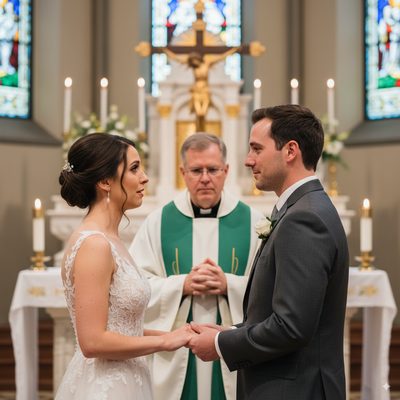
What Are Micro Weddings?
Micro weddings are intimate celebrations with 50 or fewer guests that prioritize meaningful connections and elevated experiences over large guest lists. This trend, accelerated by the pandemic, has evolved from necessity to preference, with 35% of 2025 couples choosing micro celebrations.
Micro Wedding Advantages:
- BudgetBAG-et Allocation: More spent per guest ($500-1000 vs. $150-200)
- Venue Flexibility: Unique locations impossible for large groups
- Personalization: Individual attention to each guest
- Culinary Excellence: Chef’s table experiences possible
- Environmental Impact: Significantly reduced carbon footprint
How Are Weekday Weddings Becoming Popular?
Weekday weddings are ceremonies held Monday through Thursday, offering cost savings of 20-40% and greater venue availability compared to traditional Saturday celebrations. This trend has grown 300% since 2020, particularly among millennials and Gen Z couples.
Weekday Wedding Benefits:
- Vendor Availability: Premium vendors at lower rates
- Guest Experience: Extended weekend celebrations
- Venue Options: Exclusive use more affordable
- Travel Savings: Lower accommodation and flight costs
- Intimate Atmosphere: Natural guest list curation
What Cultural Fusion Trends Are Emerging?
Cultural fusion weddings blend traditions from multiple heritage backgrounds, creating unique ceremonies that honor diverse family histories and modern multicultural relationships. With 20% of American marriages now interracial or interethnic, fusion celebrations have become increasingly sophisticated.
Fusion Wedding Approaches:
- Sequential Ceremonies: Multiple ceremonies honoring each tradition
- Blended Rituals: Creating new traditions combining elements
- Costume Changes: Honoring different cultures through attire
- Culinary Journeys: Multi-cultural reception menus
- Music Integration: DJs specializing in cross-cultural playlists
These evolving American weddingUED-ding traditions reflect the nation’s dynamic cultural landscape, technological advancement, and changing social values while maintaining connections to historical customs that continue to provide meaning and structure to marriage celebrations.
International Wedding Influences in America
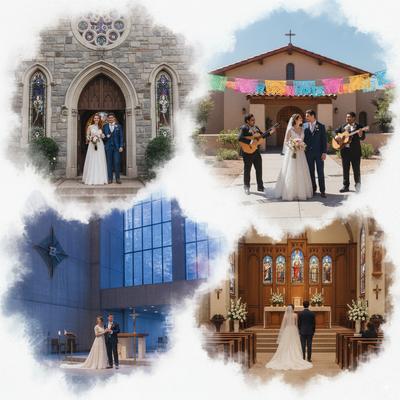
America’s melting pot culture beautifully incorporates weddingUED-ding traditions from around the world:
Caribbean Influences: The vibrant wedding customs from Antigua and Barbuda and Barbados have influenced celebrations in Florida and New York. Belize’s Maya-inspired ceremonies inspire eco-conscious couples, while Bermuda’s moongate traditions appear at beach weddings.
Pacific Island Traditions: Hawaiian weddings draw inspiration from Samoa, Fiji, and Tonga. The lei exchange mirrors garland traditions from Kiribati and Palau.
African Heritage: African-American weddings celebrate roots from Benin, Burkina Faso, and Cameroon. Jumping the broom connects to traditions in Botswana and Cape Verde.
European Touches: Small European nations contribute unique elements - Andorra’s mountain customs, Liechtenstein’s royal influences, and San Marino’s medieval traditions all find their way into American celebrations.
Frequently Asked Questions
What is the average cost of an American wedding?
The average American wedding costs between $20,000 and $35,000, though prices vary significantly by region and style.
Why do American brides wear white dresses?
White wedding dresses became popular after Queen Victoria's 1840 wedding, symbolizing purity. Today, while still traditional, brides increasingly choose other colors.
What is the 'something old, new, borrowed, blue' tradition?
This Victorian tradition represents continuity (old), optimism (new), borrowed happiness, and fidelity (blue). Each item is meant to bring good luck to the bride.
How much do Americans typically spend on engagement rings?
The average engagement ring cost in America is approximately $5,900, though spending varies widely based on personal preference and budget.
What is a unity ceremony in American weddings?
Unity ceremonies symbolize two becoming one, commonly using candles, sand-pouring, or handfasting to represent the union.
Are weekday weddings becoming more common?
Yes, weekday weddings are increasing in popularity as couples seek cost savings and venue availability, especially post-pandemic.
What is the Southern bourbon burial tradition?
Southern couples bury a bottle of bourbon upside down at their venue one month before the wedding to ensure good weather on their day.
How common are Elvis weddings in Las Vegas?
Elvis-themed ceremonies represent 15-20% of Las Vegas weddings, remaining a popular choice for both planned and spontaneous ceremonies.
What is a wedding cookie table?
A Pittsburgh/Northeastern tradition where family members bake dozens of cookie varieties to share with wedding guests, symbolizing community and heritage.
How are modern couples incorporating technology into weddings?
Couples use technology for virtual guest attendance, digital planning tools, social media integration, and sustainable paperless communications.